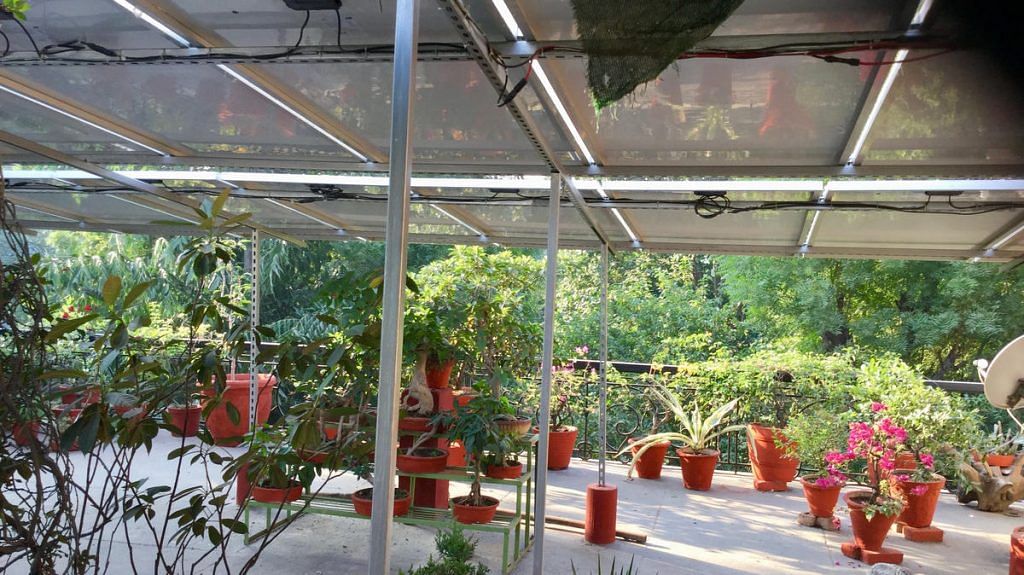Environmentally safe, user-friendly (once installed) and protection against summer heat – solar panels are a miracle.
There’s no one good guide to setting residential solar panels in India. Even so, solar panels have taken off in a big way in many states, and of late, in Himachal Pradesh and Delhi. So, based on a hunch, I decided to install solar panels on my rooftop in Delhi in May 2018.
I asked for reliable recommendations and selected two companies based purely on the receptivity of the person answering the phone. Admittedly, I did not undertake any independent diligence. Representatives from only one out of the two short-listed companies turned up. They convinced me that solar was the way to go and fortunately, I had the terrace space to do it. I decided to go ahead without a second thought.
I was told it would take 6-8 weeks from start to finish and was asked to produce just three documents: To show ownership of the property, a no-objection letter from my brother who owns half the house, and the last electricity bill. Thanks to WhatsApp, these were shared immediately with the company.
Also read: Parliament panel slams govt for failing to keep up with solar energy targets
The project would cost me Rs 45,000 per kW, which came to Rs 3.6 lakh for an 8 kW turnkey job. Inbuilt in the cost was the subsidy that the company would claim directly from the government. With the installation came a 25-year warranty against hardware failure.
I opted to pay an extra Rs 40,000 to have the solar panels erected at a height of 6-8 feet, to leave the terrace free for sitting out and shading plants from the scorching summer heat. The payment was to be made in three instalments: the first on assigning the work, the second after delivery of the equipment, the third after installation of the transformer and getting the all-clear from the electricity company—BSES. Simple enough, I thought and signed the first cheque.
The ensuing months turned out to be long and arduous. The technicians (3-4 people at a time) would descend any time of the week without notice and often work late until 10 pm erecting poles and welding them together. And then for days on end, no one would show up. Phone calls and text messages were not answered.
Finally, after several weeks the erection of the solar panels started. They were fixed on to aluminium poles grouted into the terrace floor with big, brass nuts. Although the base was agreed to be provided by the vendor, in reality, I had to get it done at personal cost.
Also read: India may be the biggest beneficiary of China’s solar industry reforms
By July end I was getting anxious. The due date was long over. Six weeks had gone by. I spoke to the manager who was helpful but his first question was whether the company was registered with the Delhi government’s oversight company IPGCL or its counterpart under the ministry of renewable energy sources—MNRE. Frankly, I didn’t know. After several phone calls, I was told that indeed the company had been licensed with the Delhi government, but had been de-licensed.
Where did that leave me? Since I hadn’t checked the credentials of a company, had I lost my money? Had I also installed a junkyard on my roof?
Calls to the Delhi government oversight company confirmed my worst doubts. The company had indeed been blacklisted for some other misconduct. I was asked why hadn’t checked in the first place! Feeling foolish the only way left was to ask a senior officer of the Delhi government to bail me out. Eventually, an official from Indraprastha Power Generation Company (IPGCL) came to see me. He was more reassuring than I expected. He said he would start supervising the completion of the project.
Even this started taking a lot of time. Frustrated, I set up a WhatsApp group with the vendor, the IPGCL official, the BSES manager and the person who had originally provided the list of vendors. Every third day I would start a new conversation. Unexpectedly, crisp, sensible responses actually started coming once the blame game had no escape routes. Things were finally moving.
Also read: Import duties on solar equipment will delay Modi govt’s renewable goals
Some days later, I was overjoyed to see a net-metering all-clear from the BPRL! Fifty-five days later came a bill that said I had generated 800 units of solar power and had consumed 400 units. Indeed I was now a net exporter of electricity!
But fixed charges would stay regardless – these had been raised from Rs 45 per kW to a whopping Rs 175 per kW from April 2018. But that applied to everyone – not just me.
For individual solar net metering aspirants, here is the bottom line. Solar power generation is truly a great way to go! Environmentally safe, user-friendly (once installed) and giving the added advantage of protection against summer heat – it’s a miracle. Only snag: The much touted ‘single window’ is a myth and a lot more ease of doing business (aka co-ordination) is needed before households find it really worth their while.
Shailaja Chandra is a retired civil servant and former secretary in the health ministry
